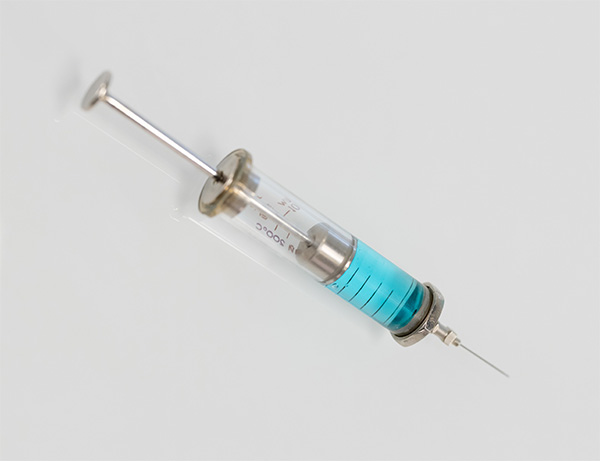Particularly today, questions are being asked about the composition and side effects of vaccines. This topic is made more topical than ever with the imposed SARS-CoV-2 vaccines.
The presence of aluminum-based adjuvants, traces of manufacturing residues, and mercury-based preservatives in certain vaccines is a source of controversy, while more and more studies denounce massive contamination of the population with heavy metals (see the Esteban study).
Do vaccines contain heavy metals?
What is in the composition of vaccines? Do they contain heavy metals? What are the risks associated with their adjuvants?
INFOVAC-SUISSE, in its December 2020 communication, answers our questions on the subject of adjuvants contained in widely used coronavirus vaccines.
How does a vaccine work?

A preventive vaccine consists of the injection of an agent called “antigen” which must provoke an immune reaction in the body. Since our immune system has a memory, when we are put in contact with the virus, our body will be prepared and ready to defend itself. The effects of the virus will then be null or largely attenuated.
We all know the story of Louis Pasteur’s first vaccine in 1885. It allowed to fight rabies and saved thousands of lives. Since then, many vaccines have been developed and used around the world.
How long does a vaccine last?
Depending on the vaccine, the duration of protection may vary. Booster shots are most often required.
What is the composition of a vaccine?
An antigen
This is the active component called “antigen”, which is responsible for triggering an immune response in the host that receives it.
The antigen can be a part of the organism that causes the disease you want to protect against. It can also be the whole organism, but in this case it is in an inactive form.
Preservatives
They are present only in the vials that contain several doses for several people. They allow the vaccine to be preserved once the vial has been opened. It is often 2-phenoxyethanol, which has been used for many years without any negative effect. It is notably used in infant care products.
The mercurial derivative thiomersal is also used in some vaccines. According to the Senate information, in France, there are 8 vaccines containing thiomersal. These are 2 hepatitis B vaccines and 6 flu vaccines.
Stabilizers
They prevent potential chemical reactions in the heart of the vaccine and with the walls of the bottle. They can be sugars (lactose, sucrose, etc.), amino acids (glycine, etc.), gelatin or proteins (albumin, yeast, etc.)
Surfactants
Also used in food, they allow the homogeneity of the liquid mixture of all components.
Diluent
This is usually sterile water.
Residual substances
These are residues from vaccine production, such as proteins, sugars, yeast, antibiotics, metal catalysts, mercury, etc. They depend on how the vaccine was manufactured. They are present in trace amounts.
Adjuvants
Adjuvants are used to improve the immune response of the vaccine. They can be aluminum salts. There are no adjuvants in all vaccines.
They are quite controversial but our health authorities consider that, insofar as they are present in our daily food, they are not more toxic in a vaccine!
Are there heavy metals or aluminium in the vaccines against the coronavirus?
No, there are no heavy metals or aluminum in the vaccines against the coronavirus.
Are there adjuvants in the vaccines against the coronavirus?
No, there is no adjuvant added in the vaccines against the coronavirus.
Are we contaminated with heavy metals?
Yes unfortunately, according to the last study of Santé Publique France 97 to 100% of the population is intoxicated in a more or less important way with heavy metals.
The ESTEBAN study reveals that we are all intoxicated with heavy metals. Analyses of hair, urine and blood were carried out on approximately 3,600 people aged 6 to 74.
Arsenic, cadmium, chromium, copper, nickel and mercury are present in our bodies, in varying amounts depending on our diet, our environment and our age, as they accumulate over time. Heavy metals are natural elements in our environment, but they are used too much in industry. They pollute our environment and have a negative impact on our health. It is very difficult for us to eliminate them naturally from our body. It tends to store them. If their level is too high in our body, they can generate many health problems that unfortunately many of our readers can testify.
What are the sources of heavy metal contamination?
Food, especially fish, certain medical implants, including dental amalgams or fillings containing mercury and still used in France, as well as tobacco are the main sources of heavy metal contamination. For more information on this subject see our article: Heavy Metals, All Contaminated.
How to detoxify naturally?
The chlorella is today the most effective natural way to detoxify your body** by ridding it of the heavy metals it has accumulated over time. Chlorella contains elements that will mobilize and then dislodge the pollutants (heavy metals and chemicals) stored in our body. It also contains elements that will transport them towards the exit for their elimination. Once dislodged, the pollutants cling to the fibers of the chelating membrane of organic chlorella. These fibers not being digested, they are eliminated via the stools and with them the pollutants which they transport.
See : Chlorella and detox : how does it work ?
Importance of the Microbiota
Our lifestyle, especially our food hygiene, is essential to maintain good health because it promotes the effectiveness of our immune system.
A healthy and balanced intestinal microbiota will not only reinforce our defenses against aggressors but it will also be better predisposed to control the immune system’s outbursts caused by certain viruses.
